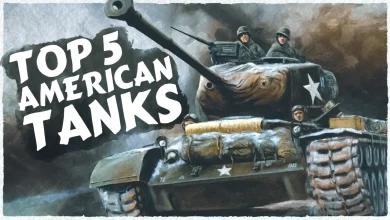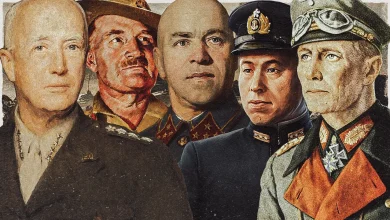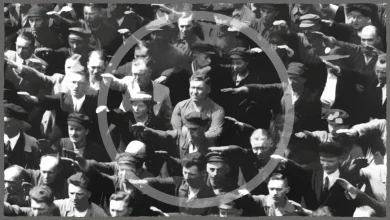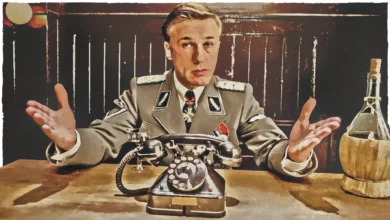Vasily Zaitsev – Sniper Hero of Stalingrad
Some famous snipers learn their trade by years of training. Others in fighting perhaps over European plains or the jungles of the Far East. But one of the best, Vasily Zaitsev, learned the art of sniping in the relentless and grim street fighting of Stalingrad.

“Shoot with a steady aim and look your prey in the eye. You’re not a boy anymore.” Those are the words his grandfather had said to Vasily when he turned 12 in 1927. Zaitsev came from a family of hunters, living on the bank of the river Saram-Sakal, in the southern Ural oblast.

The local woods were deep and dangerous, full of bears and wolves, and Zaitsev would spend most of his youth hunting animals with his grandfather. He was taught the ways of the hunter, of how to be clever, precise, and patient.
Zaitsev’s father had once fought under General Brusilov in the Imperialist’s War, and he wanted to serve his country. In 1937 he was drafted into the Pacific Fleet, donning the blue and white uniform of the Soviet sailor. But his fate was not to fight at sea, but in the rubble of a burning city.
The Great Patriotic War had been raging for over a year before Zaitsev’s request for frontline service was finally granted and he was transferred into the 284th Rifle Division.

After making the long journey from Vladivostok through the Ural mountains to the Volga, he eventually stood before the city of Stalingrad.
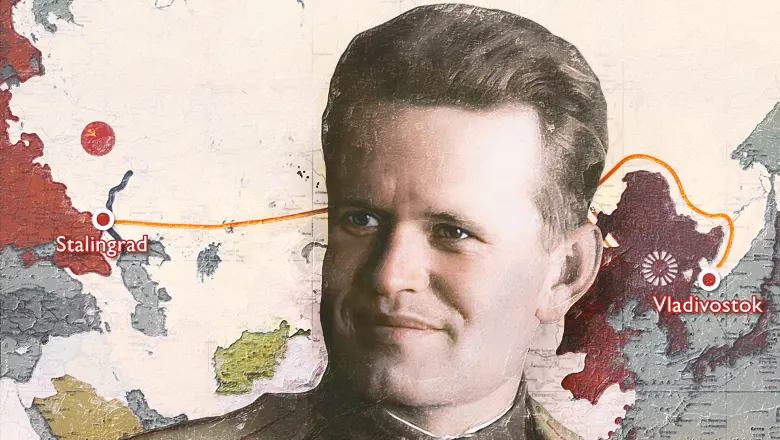
By mid October 1942, the battle for the factory district rages. From the southern slopes of Mamayev Hill, Zaitsev watches German tanks and infantry pouring into the inner city. Holding onto their last observation positions, Zaitsev fights amid the constant danger of shells and bombs, accompanied with the smell of cordite and roasted human flesh.
One day his group is in a shell crater when they come under heavy fire from a German machine gun. From roughly six hundred meters away, the gunner has a clear field of fire, and easily pins down the whole group. Desperate for options, Zaitsev pulls out a trench periscope, and after a quick look, raises his rifle and fires, practically without aiming. The gunner collapses. Two more Germans follow to take his place, but each time Zaitsev takes them out with a single bullet.
Impressed by his natural skills, his commander gives him a sniper rifle. There is no ceremony and no official papers. Only the order to kill more Germans.

At first, the Soviet snipers of Stalingrad work more or less alone. Zaitsev might find himself an elevated position in the vicinity of his unit, with a clear and wide field of fire, and then wait for his targets to show themselves. Trenches of friend and foe are often just a few couple metres away from each other, and Zaitsev’s first lesson was to be patient, but quick when the opportunity presents itself:
“Since a rapid assessment of elements in the field was not always possible, the important skills for the sniper to cultivate were patience and the ability to map every detail in his head. Small changes that appeared insignificant could in reality be targets. The sniper had to be able to react instantaneously when a worthy target exposed itself.” -Vasily Zaitsev
A German machine gun is an especially worthy target, as it can wipe out a Soviet squad in well placed bursts of fire, but since the gunner is forced to expose himself while firing, it makes him easy prey for the sniper. Once Zaitsev has moved into position, he checks the round in the chamber of his rifle and zeroes in, centering the cross-hair right between the eyes of his target.
“I liked being a sniper and having the discretion to pick my prey. With each shot, it seemed as if I could hear the bullet smashing through my enemy’s skull, even if my target was six hundred meters away. Sometimes a Nazi would look in my direction, seeming to stare right at me, without having the slightest idea that he was living out his final seconds.” -Vasily Zaitsev
If a sniper has a semi-automatic rifle or is simply really fast with working the bolt, he can also drop the nearby ammunition carriers as well before they know what’s happening. A few well placed shots are all that it takes to eliminate the deadly threat to a position.
By November, the battle of Stalingrad turns more and more into two entrenched forces fighting each other at close range over streets and houses. Trying to fully capture Mamayev Hill and the factory district has proven so costly, that the Germans can no longer really afford full on frontal assaults.

The Soviet defenders remain committed to ferocious resistance, wearing their enemies down both physically and psychologically. And the snipers play an important part in this. But this does not mean that the Germans are beaten. In fact they have some new tricks. Armed with LMGs, the German gunners act as groups, appearing at a moment’s notice to decimate Soviet assault teams. This threat Zaitsev can not hope to counter alone. What he needs is a team of his own. So he looks out for natural snipers. Men, not only with sharp eyes, but with guts and courage. They need the discipline to lie still for hours, and the iron will to pass on the easy fishes in exchange for valuable sharks, such as officers and decorated veterans. His students can be big or small, farmers or intellectuals, doesn’t matter.
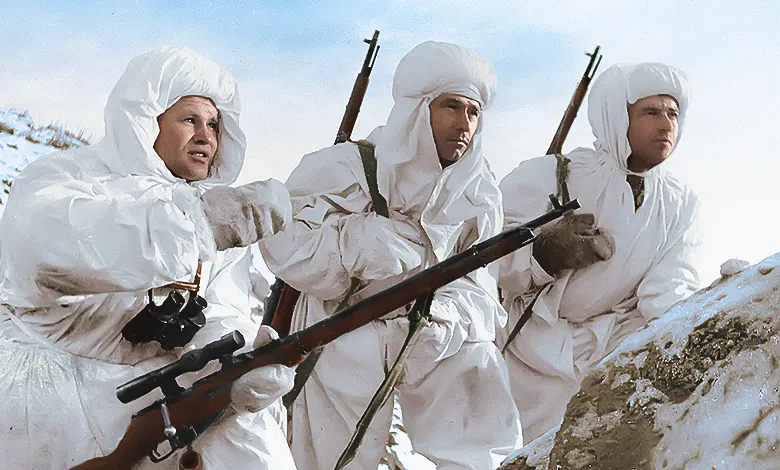
Once Zaitsev finds a promising student, they venture out into the ruins as a pair. He shows the student how to use a sight, how to calculate and adjust for wind and the correct distance, and most importantly, when to make the shot.

“Think of this like a game of billiards,” I explained. “You’re always trying to set up your next shot. If you shoot him now, while he’s turned away from you, both he and his shovel fall into the ditch. But if you wait and get him when he’s facing towards you, his shovel stays up on the near side of the embankment. That way, when the next guy grabs his shovel, you can get him too.” -Vasily Zaitsev
In teams of 5 or 6, they move like ghosts through the bombed out factories and appartements. Sneaking through places that have changed sides a dozen times, they can often hear the enemy talking the next wall over, or hear them walking on the floor above.
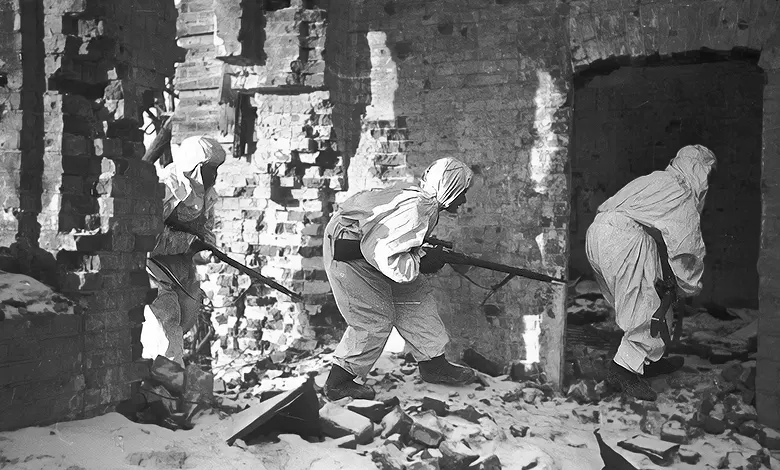
Once settled in their positions, they prepare to stay there for days. The frontline is under constant observation by the Germans, so they can not move during the day, not even to relieve themselves. Soon they are wild eyed, emaciated, unshaven and often shaking with fatigue. They suffer from a number of shortages: food, ammunition, water – but the hardest of them all is sleep deprivation. Laying in a dirthole all day, staring at an unchanging panorama of rubble and ruins, the sniper faces mental and physical exhaustion. The consequences of this monotony lead to hesitation and indifference.
“While it may only take a couple of seconds for a sniper to aim and fire, the preparation for this task often requires hours and hours of close observation. But what kind of observing can a sniper do when he’s fatigued? He’s useless. What’s more, he may endanger himself or others, because he’s stopped paying attention. And a sniper in this state of mind does not have the correct mental focus for combat.” -Vasily Zaitsev
Once engaged, though, the sniper team is an extremely deadly force. They can eliminate a group of valuable officers in mere seconds. When a firing corridor is established, the enemy is effectively trapped within their position. Without a chance of escaping or getting relief, they are dead men walking. It isn’t long until Zaitsev becomes famous. By his account, he kills on average 4 Germans a day, at a time when life expectancy for a soldier inside Stalingrad is 24 hours.
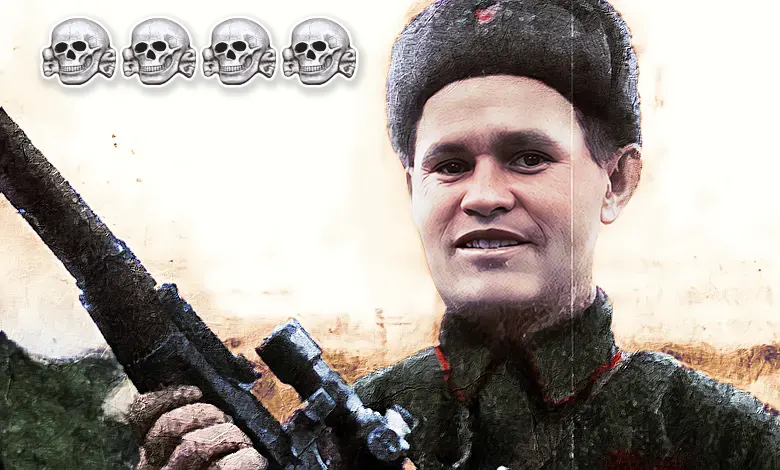
The stories of his exploits make the rounds through the ranks, until the Commissariat and even the press gets wind of him. But this also gives him unwanted attention from the Germans. Zaitsev writes that the enemy grows so agitated by their losses to snipers, that they send in their own marksman.

The threat of German snipers becomes very real. And a duel between two snipers is the true test of skill.
When Zaitsev is alerted to the presence of a German sniper he hunts him down. At first he needs the report of a witness who could tell where and how soldiers have been hit. Then he carefully approaches the sector and looks for clues where the enemy might be hiding. Locating a camouflaged shooter in all the noise and chaos is very difficult. While Soviet snipers crawl right up to the very edge of the forward lines, the Geman snipers generally take up positions deep within their own lines.
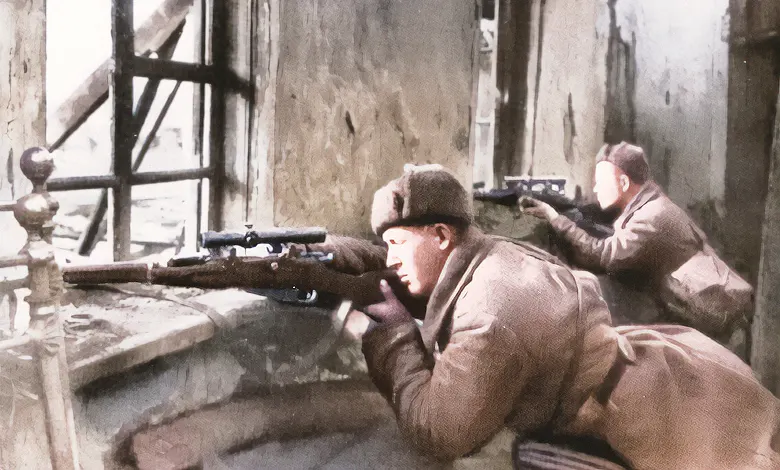
Zaitsev systematically scans bush after bush, foxhole after foxhole, as even a spent artillery cartridge can hide the muzzle of an enemy sniper. Both sides also do not refrain from using wounded soldiers as bait. As they cry out for help and someone to retrieve them, the sniper zeroes in, waiting for someone foolish enough to try.
“It always intrigues me to look through good optics at an enemy hundreds of metres away. Beforehand, you could only see him as a small and indistinct shape, then suddenly you can see the details of his uniform, and whether he is short or tall, skinny or fat. You can tell whether or not he has shaved that morning. You know if he is young or old, and if he is an officer or a soldier. You can see the expression on his face, and sometimes your target will be talking to another soldier, or even singing to himself. And as your man wipes his brow, or lazily moves so that his helmet shifts, you can find the best spot to plant your bullet.” -Vasily Zaitsev
Once he has an idea of the sniper’s lair, he builds several fallback positions and erects decoys in preparation for the duel. Like the hunter in the wilderness, he can either wait for the prey to show itself or lure it out.
“Let’s say you spot what appears to be the reflection of a lighter in the sun, and you presume it’s a sniper lighting a cigarette. Maybe yes, maybe no. Mark the spot and wait; a stream of smoke should appear. A little time will pass, or maybe even a whole day, and for a fraction of a second a helmet appears. But don’t fire! Even if you can get him this time, you don’t know yet where among the decoy positions you’ll find your real enemy sniper. And if you shoot and hit a decoy, you’ve revealed your position, but gained nothing.” -Vasily Zaitsev
Hours can pass where a sniper does nothing but lie in wait. Eyes aching from staring ahead, his neck growing tired from the strain of holding his head still. All for the hunch, for the instinct that a valuable target, an officer or an enemy sniper is out there. The duelists lie motionless in their lairs, observing the front in total silence. The one who makes a mistake first, who can no longer stand the tedium and boredom any longer, will be the loser.
Zaitsev does not see the battle of Stalingrad end. Shrapnel from a German Nebelwerfer temporarily robs him of his sight in a horrible head wound. It is not until mid-February 1943 that the doctors are able to restore his vision. He leaves the hospital a Hero of Stalingrad and of the Soviet Union, awarded with the Order of Lenin. But still to this day, his “Notes of Russian Sniper” remain a fascinating read about the harsh reality of individual combat in Stalingrad.
